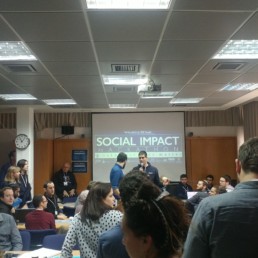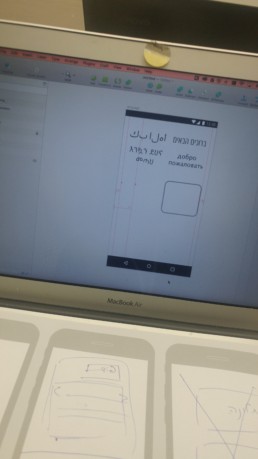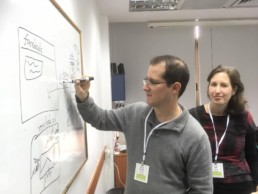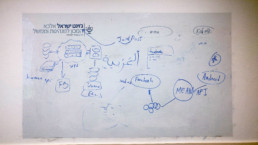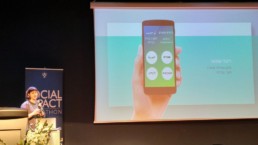A community app to facilitate social resilience, civic engagement and empowerement of underserved vulnerable populations with language and culture barriers in urban areas in Israel.
Background
In January 2017 I participated in JDC Israel’s first ever Social Impact Hackathon. I joined a team with some friends and we were given a prompt nicknamed Community Net (KehilaNet), to design a community app for neighbourhood residents to share information and resources and assist one another, based on JDC Ashalim‘s program Better Together which supports underserved communities around Israel.
Approach
We were encouraged to think about the sharing economy as inspiration, since our target population is often underserved and underfunded with regards to basic resources. We were given background information that profiles the residents and conditions of Better Together neighbourhoods by representatives of the program, which we used to draft rough personas and map needs. We were on a 24 hours time frame so we picked specific aspects to focus our efforts on, divided the coding, management, content creation and design responsibilities among us – and got to work.
Process
We were asked to address a wide spectrum of neighbourhood issues with our solution, more than we could cover in 24 hours. We therefore decided to focus on 2 key pain points of neighbourhood residents – they often had language and culture barriers preventing them from engaging with the community and voicing their needs, as well as low tech literacy which kept them away from using many digital services and apps.
Unlike fluent and tech savvy urbanites like us, these populations couldn’t use multiple channels, if any, to demand the services they need, report problems in their neighbourhood and find information and resources. So we decided the key feature we would work on building in the hackathon should be about giving those populations a voice equal to ours on the internet – without requiring them to learn a new language or technology.
Our app would be available in all relevant languages (Hebrew, Arabic, Russian and Amharic), offer features such as a neighbourhood map, event calendar, newsfeed and time bank for both sharing and mapping needs and resources in the community (as well as encouraging social interactions), and a problem reporting component which would also be accessible anonymously and without having to go through sign up. The problem reporting would be done through text, voice, video or photo – in the language the user is fluent and comfortable with. Once submitted the report would automatically generate social media posts about the problem in all languages as well as official complaints to the municipality.
We defined our guiding design principles as accessibility, simplicity and minimalism, through the use of natural language in forms and microcopy, a friendly color palette and use of iconography.
Outcome
We designed and mocked up an elaborate flow to demonstrate the concept, while also coding a proof of concept of the problem reporting feature and the automatic social media posting. We were chosen as semi finalists and presented our idea to the final panel of judges. We didn't make it into the top 3 but we were approached by a representative of the Jerusalem Municipality with an offer to pilot the app in the city - which we would have gladly done if we had the resources to actually develop it :)
